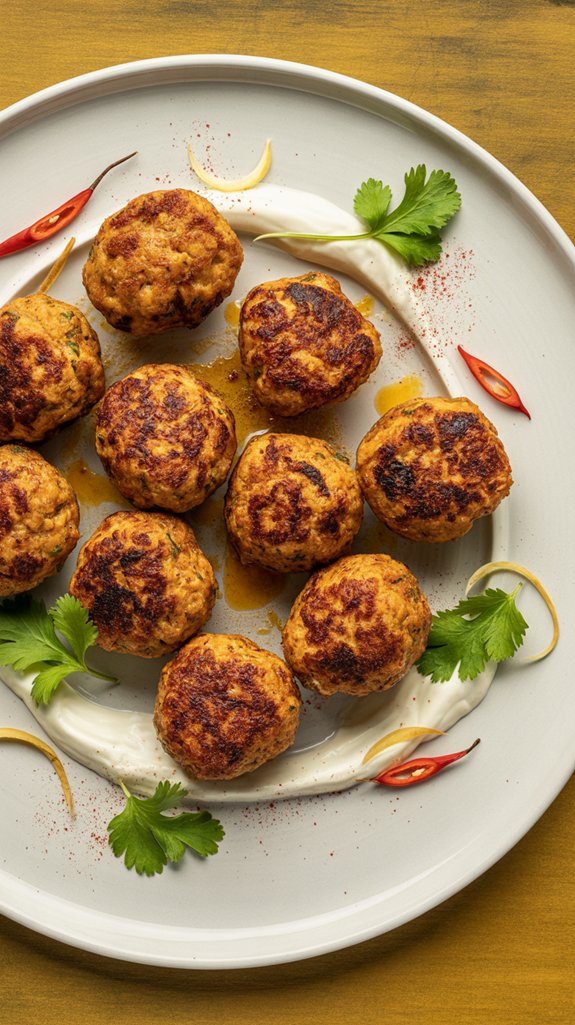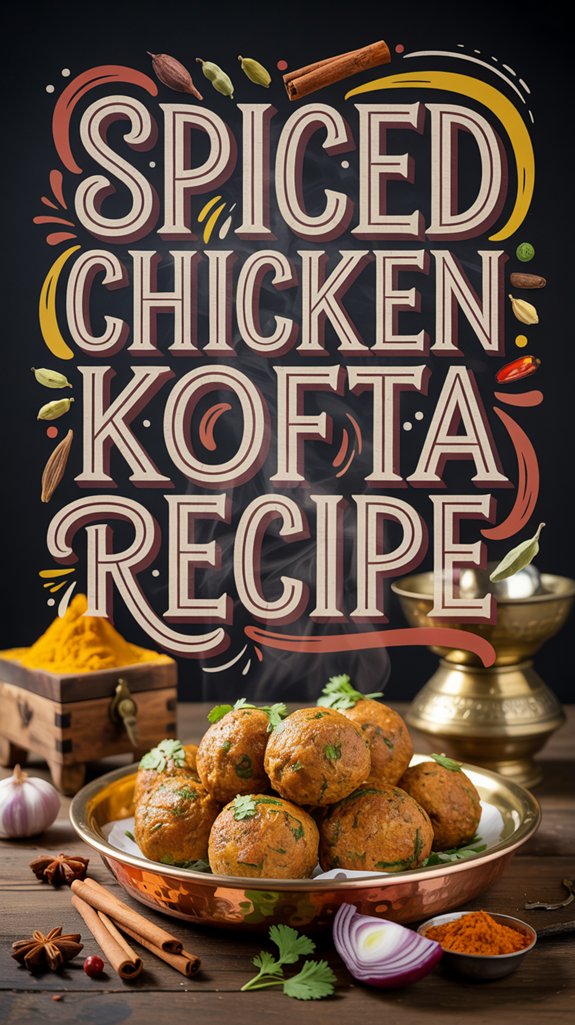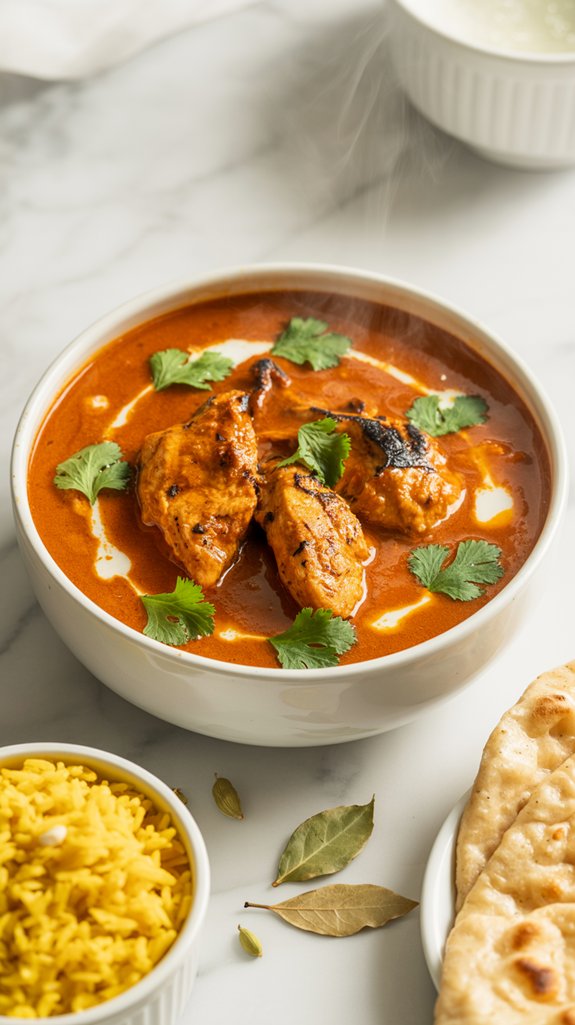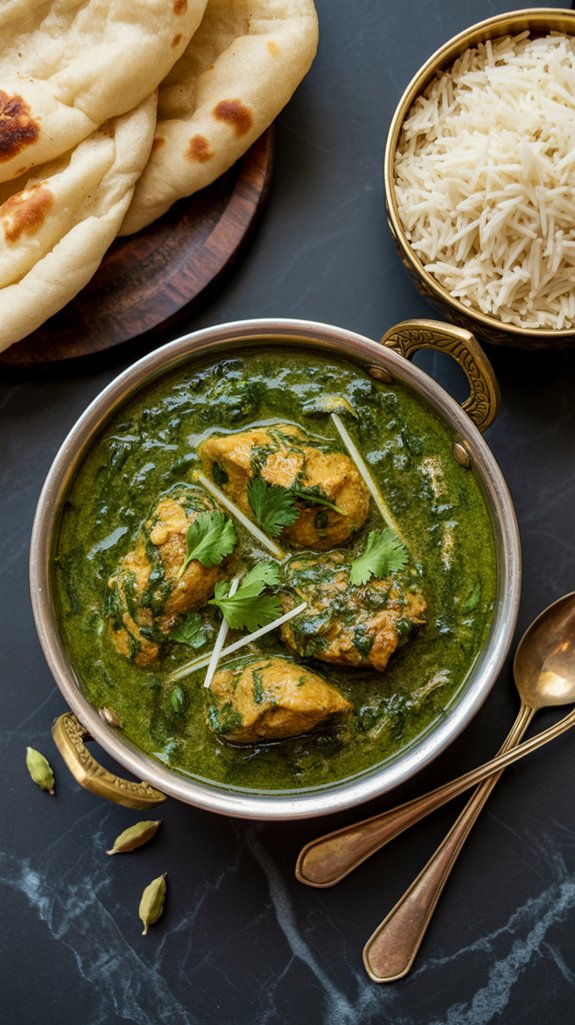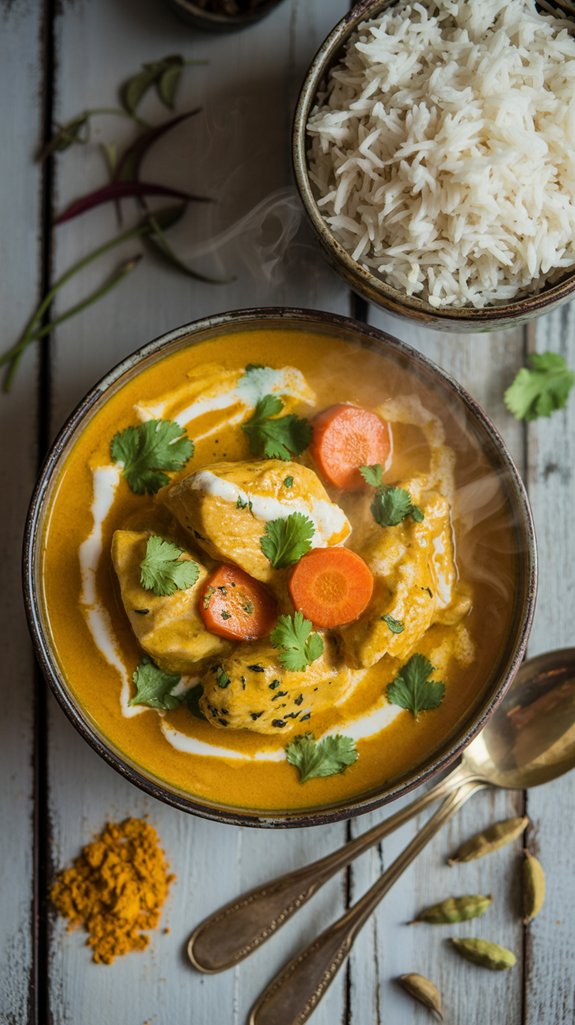Why You’ll Love This these Aromatic Indian Spiced Chicken Kofta Balls
These tender, aromatic chicken kofta balls pack a serious flavor punch with their blend of warming spices like coriander, turmeric, and just enough chili to make your taste buds do a little happy dance.
The genius cooking method – simmering the chicken in its own juices until all the water evaporates – creates incredibly moist, concentrated flavor that’ll have you wondering why you ever bothered with boring old chicken nuggets.
Served over a colorful bed of sautéed peppers and sweet corn, then topped with crushed chilies and fresh mint, this dish looks as stunning as it tastes, which is saying something because it tastes absolutely divine.
Ingredients List
You’ll need these simple ingredients to create these flavor-packed chicken kofta balls that’ll transform your dinner table into an Indian spice paradise.
- 1 lb skinless chicken, boned and cubed
- 1 garlic clove, finely chopped
- 1 teaspoon fresh gingerroot, chopped
- 1 1/2 teaspoons ground coriander
- 1 1/2 teaspoons chili powder
- 1/2 teaspoon ground fenugreek
- 1/4 teaspoon turmeric
- 1 teaspoon salt
- 2 tablespoons fresh coriander leaves, chopped
- 2 fresh green chilies, chopped
- 1 pint water
- Oil for frying
- 1 onion, sliced
- 1 green pepper, seeded and sliced
- 1 red pepper, seeded and sliced
- 6 ounces sweetcorn
- 1 dried red chili, crushed
- 1 sprig mint leaf
Health Considerations:
- Lean chicken provides excellent protein while keeping calories in check
- Fresh ginger and garlic offer natural anti-inflammatory benefits
- Turmeric brings powerful antioxidants to the party
- The colorful peppers pack vitamin C and fiber
- You can reduce oil by baking the koftas instead of frying for a lighter version
Step by Step Directions
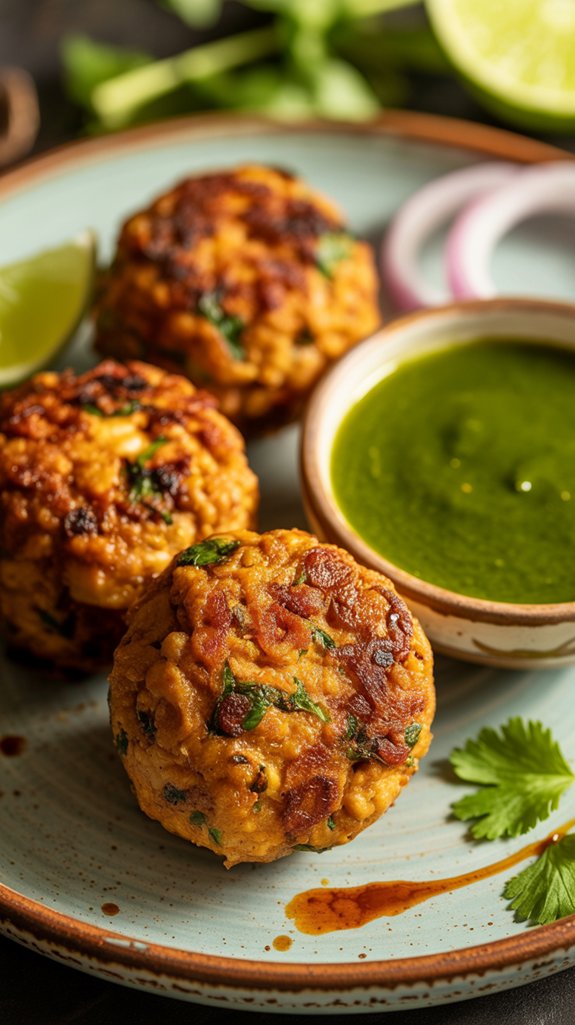
Creating these aromatic Indian chicken kofta balls involves a two-stage cooking process that builds deep flavors through simmering, then adds texture through frying.
- Prepare the chicken mixture: Place chicken, garlic, ginger, ground coriander, chili powder, fenugreek, turmeric, salt, fresh coriander leaves, green chilies, and water in a pot.
- Cook until dry: Bring to a slow boil and continue cooking until all water has evaporated.
- Cool and blend: Allow mixture to cool completely, then blend in a food processor for 2 minutes.
- Form the koftas: With wet hands, shape the mixture into approximately 12 balls.
- Fry the koftas: Heat oil in a wok and gently fry the kofta balls, stirring until golden brown all over.
- Drain: Remove koftas and drain on kitchen paper, then set aside.
- Prepare vegetables: Heat 2 tablespoons oil in the wok and stir-fry onion, green pepper, red pepper, and sweetcorn over high heat for 3 minutes.
- Drain vegetables: Remove vegetables from oil and drain excess.
- Serve: Arrange koftas over the onion and pepper base, then garnish with crushed dried red chili and fresh mint leaves.
For best results, use a premium Indian cookware set with traditional woks and pots designed specifically for authentic Indian cooking techniques.
Substitutions and Variations
- Cooking method changes: Skip the frying step and bake these at 400°F for 15-20 minutes if you want to keep things lighter, though you’ll miss that gorgeous golden crust.
- Vegetable mix-ups: Bell peppers not your thing? Try zucchini, cherry tomatoes, or snap peas – really, any quick-cooking vegetable that won’t turn to mush in three minutes works.
- Make them mini: Roll smaller balls for appetizers, or go giant and make four big ones for a heartier main course.
Additional Things to Serve With This Dish
These kofta balls practically beg for some tasty companions to round out the meal.
- Basmati rice or naan bread – Because you need something to soak up all those gorgeous spiced flavors, and to be frank, eating with your hands using naan is half the fun.
- Cooling yogurt sauce – Mix plain Greek yogurt with chopped mint, a squeeze of lemon, and a pinch of salt to calm down the heat if you went a little crazy with the chili powder.
- Simple cucumber salad – Thinly sliced cucumbers tossed with lime juice and a sprinkle of chat masala create the perfect crisp contrast to those tender, spiced meatballs.
- Pickled onions – Quick-pickled red onions add that sharp, tangy bite that cuts through the richness beautifully.
- Fresh cilantro chutney – Blend cilantro, mint, green chilies, ginger, and lime juice for a bright, herbaceous sauce that makes everything taste more vibrant.
Cooking Tips & Tricks (Chef’s Notes)
Getting these kofta balls just right takes a few sneaky tricks that’ll save you from the kitchen disasters I’ve definitely never undergone myself.
- Keep your hands damp – Wet hands are your best friend when forming these balls, otherwise you’ll end up with more chicken mixture stuck to your fingers than actually shaped into koftas, and trust me, that’s not the look we’re going for.
- Don’t skip the cooling step – I know waiting is torture when you’re hungry, but hot chicken mixture will fall apart faster than your diet plans on a Friday night, so let it cool completely before processing.
- Test your oil temperature – Drop a tiny piece of the mixture in first; if it sizzles gently without going crazy, you’re golden, but if it sits there like a sad little lump, your oil needs more time to heat up.
- Gentle stirring is key – These aren’t tennis balls, they’re delicate little flavor bombs, so treat them with the respect they deserve when frying or you’ll end up with expensive chicken crumbles.
- Make them uniform – Sure, rustic looks charming, but evenly sized balls cook at the same rate, which means no burnt outsides with raw centers, and nobody wants that surprise.
- Drain properly – Let those beauties rest on paper towels after frying because nobody likes greasy meatballs, no matter how flavorful they are.
Nutritional Facts
This Indian-spiced chicken kofta recipe delivers a protein-packed meal with aromatic spices that present more than just incredible flavor.
- High protein content – With a full pound of chicken as the star ingredient, each serving provides substantial protein to support muscle maintenance and keep you satisfied longer.
- Low carbohydrate – The recipe naturally keeps carbs minimal, making it suitable for low-carb and keto-friendly meal plans.
- Rich in vitamins – The colorful bell peppers contribute significant amounts of vitamin C and vitamin A, while the fresh herbs add folate and antioxidants.
- Mineral boost – Chicken provides essential minerals like selenium, phosphorus, and B-vitamins, particularly B6 and niacin for energy metabolism.
- Spice benefits – Turmeric presents anti-inflammatory properties, while coriander and fenugreek may help with digestion and blood sugar regulation.
- Moderate calories – Each serving contains approximately 280-320 calories, depending on oil absorption during frying.
- Healthy fats – When fried in quality oil, the koftas provide beneficial fats necessary for nutrient absorption.
- Fiber content – The vegetables and spices contribute modest amounts of dietary fiber to support digestive health.
- Low sodium option – With only 1 teaspoon of salt for the entire recipe, sodium levels remain reasonable for most dietary needs.
Fun “Did You Know?”
Did you know that kofta isn’t actually an Indian invention? I find it fascinating that this beloved dish originated in the Middle East and traveled along ancient trade routes to reach India.
The word “kofta” comes from Persian, meaning “to beat” or “to grind.” What’s amazing is how Indian cooks transformed the original recipe by adding their signature spice blends like garam masala, turmeric, and fresh coriander.
Today, you’ll find countless regional variations across India, each reflecting local tastes and ingredients. It’s incredible how one dish can tell the story of cultural exchange and culinary evolution.

